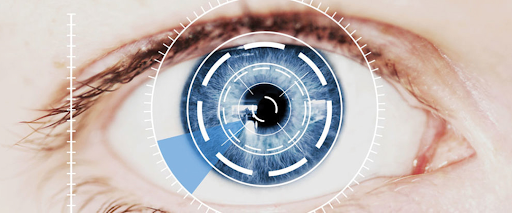Revolutionising Eye Care: Retinal Organoids and Personalised Medicine
Your eyes hold the key to some of the most intricate biological processes in your body, yet treating eye diseases often feels like figuring a maze of uncertainty. What if science could replicate parts of your retina in a lab, using your own cells, to uncover precise treatments tailored just for you? This is the promise of retinal organoids.
Retinal organoids, miniature 3D models of the retina grown from stem cells, are revolutionising how we understand and treat visual disorders. Paired with the advancements in personalised medicine, they offer a future where therapies are customised to your unique genetic profile. This isn’t just about improving vision; it’s about transforming how we approach eye health entirely. As these innovative tools bridge the gap between research and real-world applications, they’re redefining what’s possible in precision medicine—changing lives one retina at a time.
Retinal Organoids: A Closer Look
Retinal organoids represent an innovative leap in ocular research. Derived from stem cells, they replicate key aspects of the human retina in structure and function.
What Are Retinal Organoids?
Retinal organoids are lab-grown 3D cellular models. Formed using pluripotent stem cells, they mimic the layers and cellular composition of a natural retina. You might consider how they reflect the retina’s discrete architecture, including photoreceptors, ganglion cells, and bipolar cells. By offering a controlled environment, these organoids help researchers focus on specific retinal processes that occur during development or in disease progression.
The Science Behind Retinal Organoid Development
Developing retinal organoids involves precise methodologies. You will find that scientists use pluripotent stem cells, which, through defined differentiation protocols, are guided into forming retinal-specific tissues. The organoids grow in vitro over weeks or months, gradually forming discrete retinal layers. This process provides a unique platform to study genetics and pathology under conditions closely resembling the human retina. These systems also allow for insights into developmental stages unseen in conventional two-dimensional cell cultures.
The Role Of Personalised Medicine
Personalised medicine tailors treatments to individual genetic and biological profiles. In retinal research, this approach aligns closely with advancements in organoid technology, addressing specific patient needs.
Defining Personalised Medicine
Personalised medicine refers to a medical model focusing on treatments shaped by your unique genetic, environmental, and lifestyle factors. Instead of generalised solutions, it emphasises targeted interventions designed with precision. In applying this to retinal health, your care could incorporate therapies developed to match your distinct requirements. By using this model, you reduce uncertainties and improve the treatment efficiency for complex conditions.
Benefits Of Personalised Medicine In Eye Care
In eye care, personalised medicine enhances your outcomes by adapting therapies to your unique genetic makeup. With retinal organoids, you will notice improved drug screening, as these models precisely mimic your retinal structure. This ensures medications or treatments address problems specific to your case. For hereditary retinal disorders such as retinitis pigmentosa, therapies developed using your genetic profile enable tailored interventions. You may experience reduced side effects, as these approaches significantly adapt to your body’s responses.
Retinal Organoids In Personalised Medicine
Retinal organoids provide a cutting-edge way to explore personalised treatment methods for eye conditions. Their ability to emulate human retinal features creates a meaningful connection between laboratory research and tailored patient therapies.
Bridging The Gap Between Research And Patient Care
You will find that retinal organoids hold the potential to significantly narrow the divide between experimental studies and clinical applications. By replicating the retina’s three-dimensional structure and function, they allow researchers to test therapies in conditions resembling actual human biology. In the case where genetics play a central role, organoids help personalise interventions by offering patient-specific cellular models. This connection creates streamlined testing pathways, improving the accuracy of therapeutic approaches.
Insights Into Disease Mechanisms And Drug Development
Organoids enable you to delve into the intricate mechanisms behind retinal disorders. Hereditary conditions, like retinitis pigmentosa, become more accessible for analysis when you examine their genetic disruptions through this model. Drug testing benefits too, as retinal organoids faithfully mirror human tissue responses. You might consider their use essential where traditional two-dimensional models fail to capture disease complexity. By enhancing understanding and refining treatments, these organoids drive progress in retinal medicine efficiently.
Challenges And Limitations
Working with retinal organoids carries ethical complexities, particularly surrounding stem cell sourcing. When generating these organoids, you might encounter debates regarding the origin of pluripotent stem cells, whether embryonic or induced. Ethical guidelines demand keen adherence, ensuring fully informed consent from donors. Discussions often emerge about intellectual property, especially in personalised medicine. You will also find that questions about long-term implications for patients influence research priorities. Balancing innovation with ethical responsibility is crucial as you figure out this evolving field.
Creating retinal organoids also involves intricate protocols, and you might notice variability in differentiation outcomes. Reproducing consistent, fully matured organoids is challenging due to the sensitivity of stem cell cultures. You will observe that scalability can limit their wider application, with high costs and extensive time required. Accessibility to advanced lab facilities becomes another barrier. Analysing these organoids presents hurdles, as simulating the complexity of a living retina has technical limitations. These factors complicate the integration of organoids into routine clinical settings, requiring lasting innovations to refine methodologies.
Glancing into the Future
Exploring the future of retinal organoids underscores the transformative possibilities within this science. As their capabilities expand, you will find a shift in how personalised medicine integrates into mainstream healthcare.
Innovations In Retinal Organoid Research
Advances in bioengineering are refining organoid structure and functionality, ensuring greater precision in mimicking the human retina. Techniques like CRISPR-based gene editing might enhance your ability to investigate disease-specific mutations. With machine learning powering organoid modelling, you will uncover intricate cellular behaviours and predict responses to therapies. Enhanced scalability holds potential for streamlined production, enabling broader adoption in diverse research.
Implications For Global Healthcare
Retinal organoids could revolutionise treatments for underserved populations. In regions with limited resources, adaptable organoid platforms might drive affordable diagnostic tools. For rare conditions, access to tailored therapies ensures your contribution to addressing significant gaps. Healthcare systems prioritising precision medicine will see more efficient disease management and cost reductions. By aligning with global priorities, organoids can reshape visual health strategies, impacting millions worldwide.
In Closing
Retinal organoids represent a groundbreaking step forward in the journey towards personalised medicine. By combining advanced stem cell research with tailored therapeutic approaches, they offer a unique opportunity to redefine how you address complex retinal disorders.
As these technologies evolve, they hold the promise of bridging the gap between experimental discoveries and real-world clinical applications. While challenges remain, ongoing innovations are paving the way for more accessible, precise, and effective treatments that could transform the future of eye care.
This exciting convergence of science and medicine underscores the immense potential of retinal organoids to improve lives and advance global healthcare priorities.




